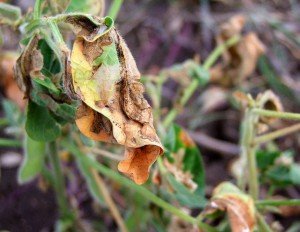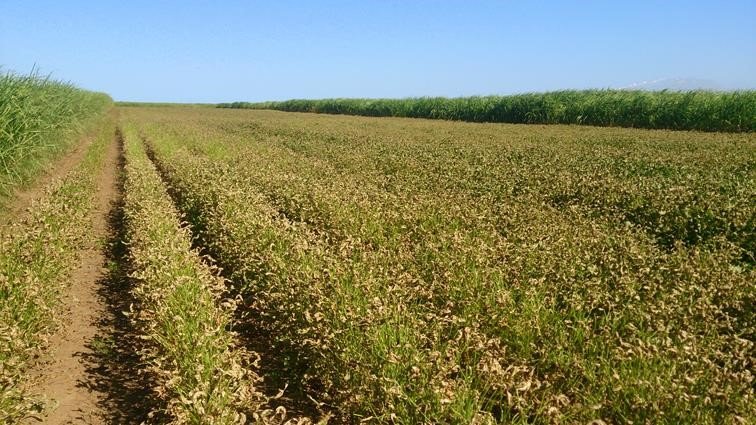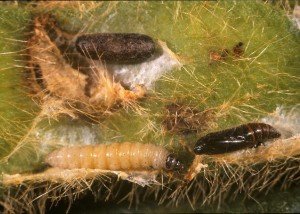UPDATE (1 October 2019): High numbers of moths are still being reported in this region. Continue to check soybean crops for this pest.
Reports have come in of major soybean moth activity in winter-planted soybeans in the Burdekin and Mackay regions. Some of the outbreaks caught all concerned by surprise, and one report came from a crop barely 10 days old.
Growers/consultants are urged to check their crops so not to be caught out by this small but sometimes extremely numerous pest. In severe outbreaks, most leaflets on a plant can be infested with multiple larvae, equating to populations in excess of 1000 larvae per square metre.
Outbreaks have been reported in recent years in the Wide Bay Burnett and the Burdekin, but are possible in any soybean growing region. Young crops may grow out of early damage, but that will depend on how much terminal damage occurs.
What are the thresholds?
Thresholds are based on percentage defoliation. In vegetative crops, 33% leaf tissue death (mining) is allowable before yields are compromised. However, the tolerable percentage defoliation falls to less than 20% during pod-fill.
Controlling soybean moth
Soybean moth larvae are easily controlled with abamectin at 300 mL/ha under Permit 86185 (valid until 30 April 2023). This product is effective because it has translaminar activity, i.e. is able to penetrate the leaves to kill the larvae within. Insecticides without translaminar activity such as methomyl and synthetic pyrethroids (e.g. deltamethrin, alpha-cypermethrin) will NOT kill soybean moth larvae.
Feeding larvae die inside the leaves and turn an opaque grey colour, however larvae in the pale (white) pre-pupal stage have stopped feeding and will not be controlled by the insecticide.
Remember that abamectin has a lengthy 28-day withholding period. Note also that abamectin has been shown to be ineffective against legume webspinner in recent DAF trials.
For further information about soybean moth and similar pests, see the soybean moth article from March 2019.
Can you help?
We are interested in any information regarding the impact of other caterpillar insecticides on soybean moth larvae in crops (where these insecticides were targeting caterpillar pests other than soybean moth). Also, photographs of severe damage to very young soybean crops would be appreciated. If you can help, contact either:
- Hugh Brier, Principal Entomologist DAF Kingaroy Q.
Email: [email protected] Phone 0741 821 840 or Mob 0428 188 069 - Trevor Volp, Entomologist DAF Toowoomba Q
Email: [email protected] Phone 0745 294 180
Article by Hugh Brier and Trevor Volp



